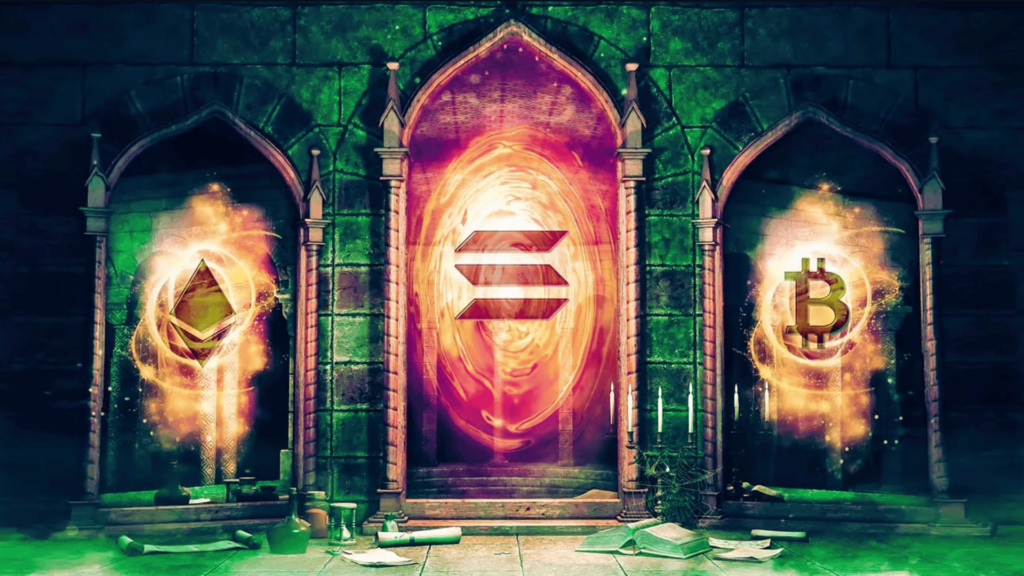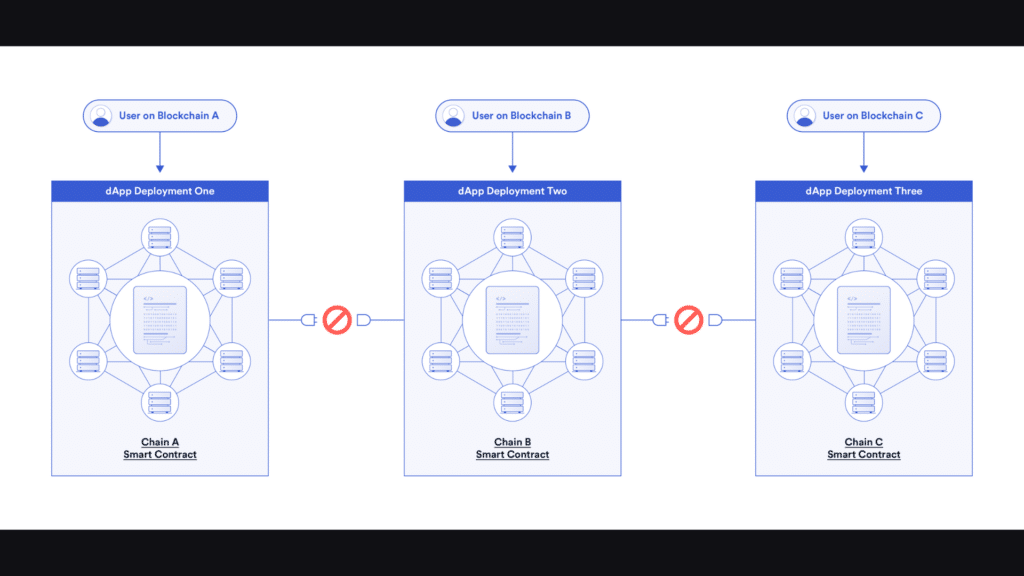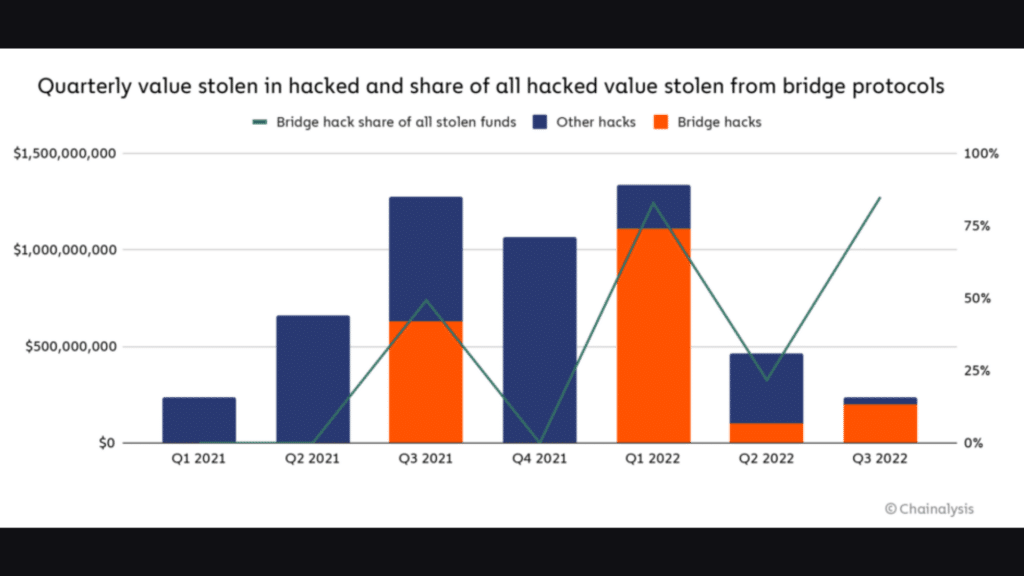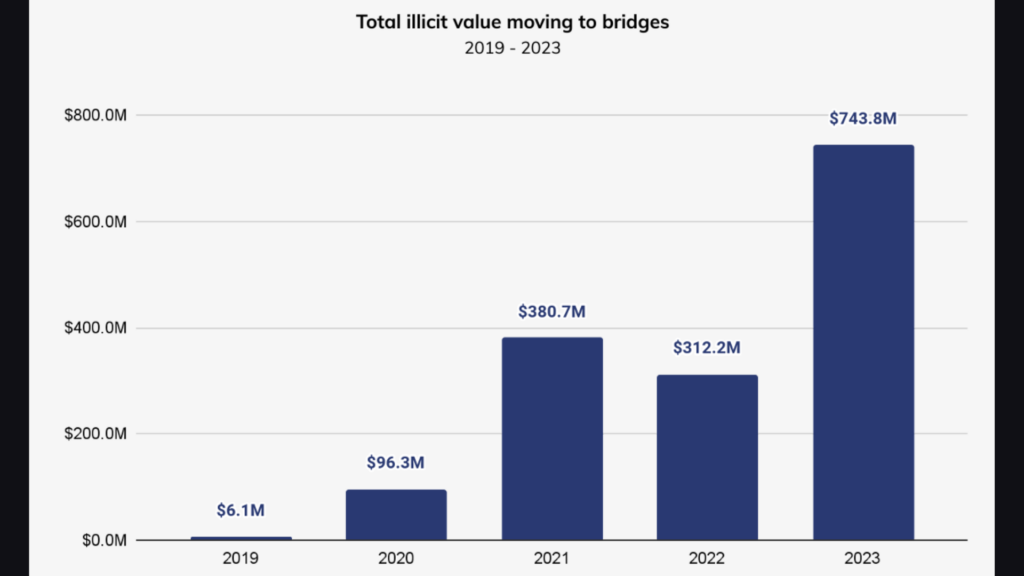Multi-chain wallets play a key role in promoting blockchain interoperability, accelerating the adoption of Web3 among regular users.
Written by: Anatol Antonovici | Updated September 16, 2024
Fact checked by: Ryan Grace

Table of Contents
🍒 tasty takeaways
- Multi-chain wallets offer support for multiple major blockchain networks and the ecosystems built on them.
- The main benefits of multi-chain wallets are accessibility to multiple networks and diversified crypto management.
- tastycrypto offers support for Bitcoin, Ethereum, and Solana ecosystems.
A multi-chain crypto wallet is one that allows you to store digital assets across multiple blockchains, including major public decentralized networks like Bitcoin, Ethereum, and Solana.
Using a non-custodial multi-chain wallet, crypto holders can easily switch between different chains and interact with decentralized applications (dapps), explore decentralized finance (DeFi) opportunities, and store hundreds or thousands of tokens hosted by various chains. They can do all of these actions while having full control over their private keys.
Multi-chain wallets play an important role in promoting blockchain interoperability—one of the key objectives of decentralized networks—to speed up Web3 adoption and make the crypto experience accessible for regular users.
Blockchain Fragmentation and the Need for Interoperability
Fragmentation has been one of the biggest challenges of blockchains, as they are isolated by design in order to eliminate external influence from intermediaries.
This fragmentation makes it difficult to use BTC on Ethereum-based dapps or create applications that would support both Ethereum and Solana dapps. It also hinders adoption by forcing crypto investors to create multiple single-chain wallets and interact with different platforms, making it time-consuming and leading to missed opportunities for yield across independent chains.
Source: Chainlink
Interoperability is imperative for blockchain’s wider adoption. However, some of the key interoperability solutions, such as bridges, have turned out to be major security vulnerabilities. For example, 2022 saw a record amount of stolen crypto, with bridges being the most targeted weak points.
Source: Chainalysis
Meanwhile, in 2023, illicit actors moved record amounts of crypto through cross-chain bridges.
Source: Chainalysis
To achieve safer interoperability, some blockchains choose to be compatible with the Ethereum Virtual Machine (EVM), being able to execute Ethereum smart contracts. This makes sense since Ethereum dominates the DeFi and non-fungible token (NFT) markets. However, the EVM is not a universal standard, and major chains like Bitcoin and Solana remain isolated from the Ethereum ecosystem.
How Do Multi-Chain Wallets Contribute to Interoperability?
Although multi-chain wallets don’t fully address the fragmentation problem, they represent a major leap in interoperability.
These wallets are designed to support multiple decentralized networks by understanding the rules of each supported chain. They can communicate with nodes on different networks, allowing users to send and receive digital assets and interact with dapps on all supported chains.
Managing multiple crypto assets from a single interface is much more convenient and safer than dealing with multiple single-chain wallets.
Thanks to their versatility and simplicity, multi-chain wallets make a significant contribution to accelerating Web3 adoption.
🍒 How To Diversify Your Crypto Portfolio
Benefits of a Multi-Chain Wallet
Here are the main benefits of multi-chain wallets:
- Accessibility and compatibility – with a multi-chain wallet, you can explore multiple blockchain dapps and ecosystems from a single interface. For example, you can lend your crypto to earn interest on Aave, an Ethereum-based lending dapp, and trade perpetuals on Solana-based Jupiter. You can move all of your tokens to a single wallet, which is very convenient.
- Diversified asset management – you can treat your multi-chain wallet as a diversified crypto portfolio where you can store tokens from different chains. This makes token management and analysis much easier.
For example, you can hold Bitcoin, Ethereum, Solana, as well as DeFi tokens, artificial intelligence (AI) tokens, and other digital assets that fuel different Web3 sectors. You can also add NFTs to further diversify your crypto exposure. - Built-in features – many multi-chain wallets offer built-in token swap service, functioning as decentralized exchanges (DEXs). Such a wallet is a powerful tool because it lets you exchange tokens across multiple chains without interacting with any dapp. In addition to swaps, these wallets may let you transfer assets across different chains. For example, you could convert ERC-20 USDC to Solana-based USDC.
tastycrypto Offers Multi-Network Support
tastycrypto is a non-custodial multi-chain wallet that supports major networks, contributing to blockchain interoperability. The wallet is very accessible, being available as a mobile app for Android and iOS devices as well as a Chrome extension.
It allows you to trade Bitcoin as well as Ethereum and Polygon-based tokens. It also supports the Solana network on mobile app.
tastycrypto supports hundreds of tokens, including NFTs, serving as a great tool to store tokens from different chains and build a crypto portfolio.
Unlike MetaMask, probably the most popular self-custody wallet focused on EVM networks, tastycrypto can store Bitcoin, offering a unified solution for Bitcoin maximalists and DeFi explorers.
In addition to acting as a crypto storage solution, tastycrypto offers the swap feature, enabling users to exchange tokens across different chains.
The wallet offers an intuitive interface that makes crypto accessible for everyone without compromising security. Users don’t have to share personal data and have full control over their crypto funds.
🍒 Download the tastycrypto Wallet
FAQs
What is a multi-chain wallet?
A multi-chain wallet allows you to store and manage crypto assets across multiple blockchain networks, such as Bitcoin, Ethereum, and Solana, from a single interface.
Why does multi-network support matter?
Multi-network support makes crypto asset management easy by allowing users to interact with multiple blockchain ecosystems through one wallet, promoting interoperability.
How do multi-chain wallets promote interoperability?
Multi-chain wallets promote interoperability by allowing users to send, receive, and exchange cryptocurrencies across different decentralized networks without the need for separate wallets
What blockchains does tastycrypto support?
tastycrypto supports Bitcoin, Ethereum, Polygon, and Solana (on iOS), enabling users to store and manage assets across these major networks.
🍒 tasty reads


The Core Blockchain and DeFi Ecosystem: What You Need to Know

7 Best DePIN Crypto Projects

What Is Symbiotic and How Does It Work in 2024?

Ethereum vs Ethereum ETFs – 5 Major Differences


Anatol Antonovici
6+ years of experience writing for crypto brands and blockchain firms, including Coindesk, Cointelegraph, Bitcoinist, CryptoPotato, Algorand, and OTCTrade.com




